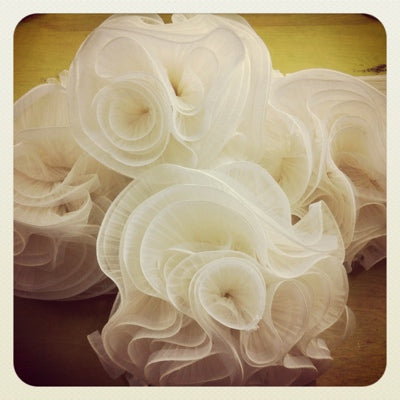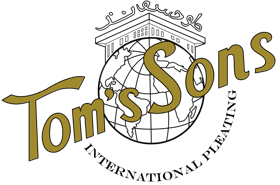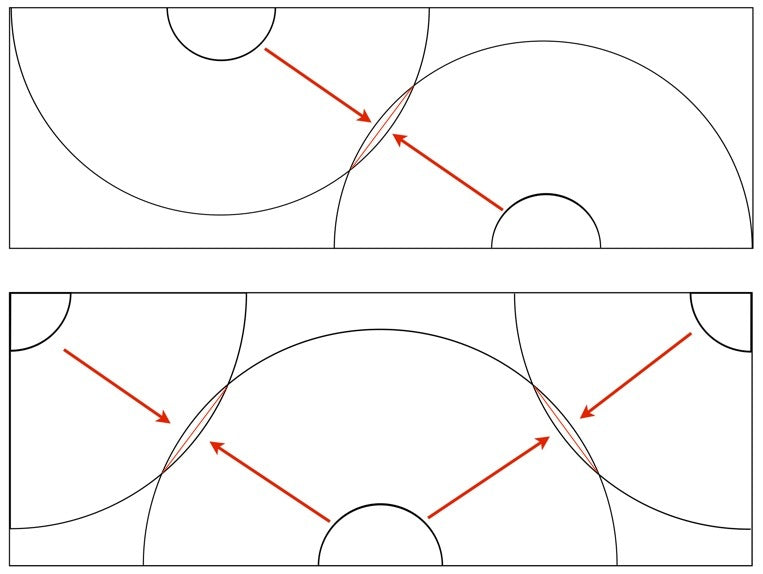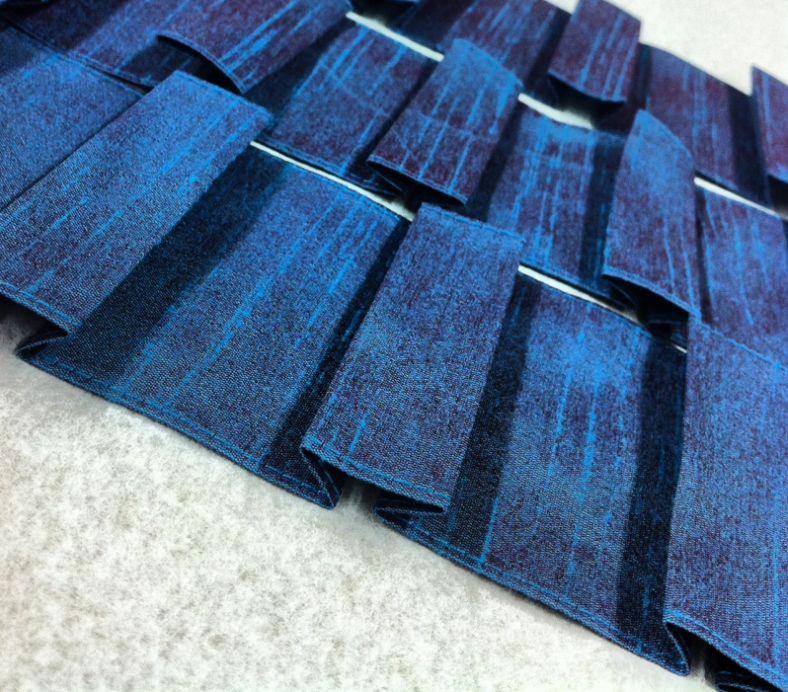
How to Make Pleated Ruffles
There are many different types of pleated ruffles, and many ways to make them. Below you will find examples of three garments all pleated in the same style, yet with very different looks.
In this post I will discuss the three basic elements of rectangular shaped ruffles: fullness, stiffness and hems.
Fullness of the Pleating
By fullness of the pleat, I am referring to the amount of open yardage that is used to create one yard of pleated fabric. Typically, the more fabric used per yard of pleating, the more expensive it looks… and costs! For example, many less expensive pleated garments consume anywhere from 1.5 to 2 times the fabric…meaning if you make a skirt with a 36in waist you are consuming between one and a half to two yards of fabric. Sometimes it can be beneficial to use such little fabric but in most cases it looks “cheap.” For ruffles to look dramatic, you need at least three to five times the yardage depending upon the fabric and the style. This would be the case for an evening gown or a pleated bridal train.
If you look at the image above, you can see that the blue skirt and the ivory bridal train have quite a bit more fabric than the black skirt.
Fabric Stiffness
You also need to consider the stiffness of the fabric when making pleated ruffles. Fabric selection has a great effect on the look and movement of your ruffles. For example, a chiffon will not fall the same way as an organza!
In the images above, the black skirt is make with a chiffon, the blue skirt is made from a soft tulle and the pleated wedding train is made from a stiff silk organza.
Hemming Options
Different types of hems can create DRASTICALLY varying results. For example, hemming a fabric before it is pleated will produce a very flat look. But hemming after pleating will create a curling effect. This will be especially true if the fabric has been pleated deeply and if hemmed with something stiff like horsehair.
In the image above, notice all three hems: the black chiffon has a slight curl to it because it has a pearl edge. Since the blue skirt is a tulle and will not fray, we decided not to hem it at all. The train for the wedding dress has been hemmed with horsehair, forcing the pleat to open and create a curling effect. The deeper the pleat, the more intense the curl becomes.
How to Make Ruffles
I wrote this post because this seems to be a common question regarding how to make and order pleated ruffles:
We pleat the full width of the fabric first. Most fabrics range from 44″ to 58″ in width. After the fabric has been pleated, we cut it into the desired strips. The image below demonstrates how you would cut down your desired ruffle widths. The widths do not all have to be be the same. Based on your design you could cut 20″, 14″ and 10″ ruffles (or any combination you need).
Figuring Out Yardage
If you buy two yards of pleated fabric that is 44″ wide and cut it into strips of 11 inches, you would have 8 yards of pleated ruffles (4 x 2 yds.). If you want to figure out how much fabric to buy for such an order, simply multiply the two pleated yards by three. Three times the fabric is a general rule of thumb that applies to 90% of situations. With that calculation, that would mean you would need six yards of open un-pleated fabric to make eight yards of pleated ruffles of 11 inches in width.
As I mentioned earlier, there are many possibilities when making ruffles and each require different steps. This post covers straight ruffles and not circular or bias cut ruffles. If you have a specific look you are trying to accomplish, don’t hesitate to give us call – we are here to help!




